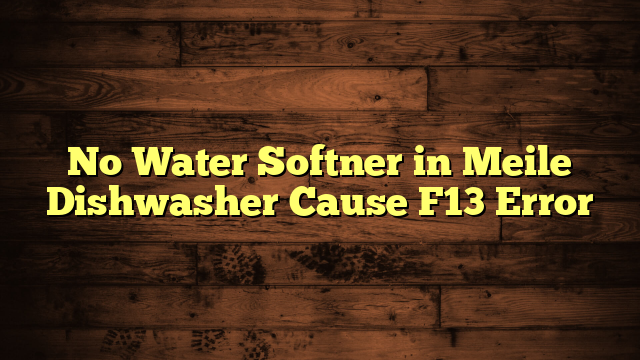What Happens if Bypass Is Left on to Water Softner?
If you leave the bypass valve on for your water softener, untreated hard water flows freely through your system, leading to a range of potential problems. You might notice scale buildup in your pipes and appliances, which can increase your repair costs and energy bills over time. Furthermore, the water quality can suffer, impacting everything from your skin to your hair. As you consider these implications, you may start to wonder how to prevent such issues and what steps are necessary to guarantee your water softener functions effectively.
Key Takeaways
- Leaving the bypass on allows hard water to flow through, leading to scale buildup in pipes and appliances.
- Appliances may experience reduced efficiency and lifespan due to increased mineral accumulation from untreated water.
- Higher utility costs can occur as appliances work harder against scale, increasing energy consumption and maintenance needs.
- Water quality declines, resulting in cloudy water, taste issues, and less effective soaps and cleaning products.
- Prolonged bypass usage can decrease property value and lead to costly repairs or replacements of plumbing and appliances.
Understanding the Bypass Valve
Many homeowners may not realize the importance of the bypass valve in a water softener system. This vital component allows you to divert water away from the softener, maintaining your water supply without treating it. The bypass function is particularly useful during maintenance or when the system is regenerating, guaranteeing you still have access to water for daily activities.
The valve's importance extends beyond mere convenience. It helps protect your home's plumbing from potential issues caused by untreated hard water, such as scaling and mineral buildup. By allowing you to control when your softener is operational, you can effectively manage your water quality and guarantee that your system runs efficiently.
When you engage the bypass valve, you effectively isolate the softening process, which can be beneficial in various scenarios. For example, if you're experiencing a hard water issue but need immediate access to water, using the bypass function provides a temporary solution.
Furthermore, if you're traveling or away from home, you can bypass the system to avoid unnecessary wear and tear. Understanding the bypass valve is essential for peak water softener performance and longevity.
Effects of Hard Water
Hard water can lead to significant scale buildup in your pipes and appliances, reducing their efficiency and lifespan.
You may also notice that soap doesn't lather as effectively, making cleaning tasks more challenging.
Understanding these effects can help you appreciate the importance of addressing hard water issues in your home.
Scale Buildup Consequences
When dealing with hard water, scale buildup can lead to significant issues within your plumbing and appliances. By not implementing scale prevention measures, you risk:
- Reduced Water Flow: Scale can clog pipes, leading to decreased water pressure and flow rate.
- Increased Energy Bills: Appliances like water heaters work harder to overcome scale buildup, consuming more energy and increasing costs.
- Shortened Appliance Lifespan: The accumulation of scale can damage components, leading to expensive repairs or replacements.
Ignoring scale buildup not only affects water clarity but also impacts your household's overall efficiency.
When hard water passes through pipes and fixtures, minerals deposit over time, forming a hard crust that can be extremely difficult to remove. This not only compromises the functionality of your plumbing but also affects the quality of water you use daily.
To mitigate these issues, consider regular maintenance and water softening solutions.
Investing in effective water treatment systems can protect your plumbing and appliances, ensuring peak performance and extending their lifespan.
Don't wait for the consequences to escalate; prioritize scale prevention to maintain your home's efficiency and water quality.
Soap Inefficiency Issues
Soap efficiency takes a significant hit in the presence of hard water due to the minerals dissolved within it. When you use soap in hard water, it reacts with calcium and magnesium ions, forming soap residue instead of lather. This residue not only clogs your drains but also reduces the soap's overall cleaning effectiveness.
You might notice that your dishes, clothes, or even your skin feel less clean after washing. This inefficiency forces you to use more soap, increasing your costs and contributing to environmental waste. Fundamentally, you're paying more for less effective cleaning.
Additionally, the presence of soap residue can lead to a buildup on surfaces, making cleaning tasks more laborious. Regular cleaning products may not work as intended, leaving you frustrated with stubborn stains and grime.
In the long run, if you leave the bypass on your water softener, you'll face ongoing soap inefficiency issues. To avoid these complications, it's crucial to verify that your water softener is functioning properly, allowing you to maximize soap effectiveness and maintain a cleaner, healthier environment.
Increased Utility Costs
In the context of household management, increased utility costs can often stem from the inefficiencies associated with water softeners. When you leave the bypass on, your system fails to soften the water effectively, which can lead to higher utility consumption. This situation may impact your monthly bills considerably. A cost analysis of your water usage can reveal these hidden expenses.
Here are three key points to reflect on:
- Increased Water Usage: Without proper softening, you may use more water for rinsing soap and detergent, leading to excessive consumption.
- Higher Energy Bills: Appliances like water heaters work harder with hard water, increasing energy costs as they struggle to heat water effectively.
- Frequent Appliance Repairs: Over time, the inefficiencies can lead to damage in appliances, resulting in costly repairs or replacements.
Damage to Plumbing Systems
When you bypass your water softener, mineral buildup can lead to significant damage within your plumbing system.
This accumulation not only restricts water flow but also increases maintenance costs as you'll need to address clogs and repairs more frequently.
Ignoring this issue can result in costly replacements and extended downtime for your plumbing.
Mineral Buildup Issues
Mineral buildup in plumbing systems can lead to significant issues, often manifesting as reduced water pressure or complete blockages. When you bypass your water softener, mineral deposits from hard water accumulate in pipes. This not only affects flow but also compromises the overall efficiency of your plumbing system.
Here are three vital consequences to take into account:
- Reduced Water Flow: Over time, mineral deposits constrict pipe diameter, leading to decreased water flow and pressure.
- Appliance Damage: Hard water can damage appliances like dishwashers and water heaters, reducing their lifespan and efficiency.
- Clogged Fixtures: Faucets and showerheads can become clogged with mineral buildup, resulting in uneven water distribution and unsightly stains.
Ignoring these issues can lead to costly repairs. The longer you leave the bypass on, the more pronounced these problems become.
Regularly maintaining your water softener enhances softener efficiency and keeps your plumbing system running smoothly. If you've noticed signs of mineral buildup, it's important to address it promptly to prevent further damage.
Keeping your softener in operation is vital for mitigating these risks.
Increased Maintenance Costs
While bypassing your water softener might seem like a quick fix, it can lead to increased maintenance costs due to the damage it inflicts on your plumbing system.
When hard water flows through unsoftened pipes, mineral buildup accelerates, eventually causing blockages and reducing water flow. This can result in increased repairs, as you may need to hire professionals to clear clogs or replace damaged pipes.
Furthermore, the wear and tear on appliances like water heaters and dishwashers can escalate, leading to unexpected breakdowns. These issues can strain your budget considerations, as repairs or replacements can be costly.
In addition, the increased maintenance required from a bypassed system may not be immediately apparent. Over time, you could find yourself spending considerably more on repairs than you'd have on regular maintenance of your water softener.
Neglecting to address the bypass can create a cycle of escalating costs, ultimately affecting your home's plumbing integrity.
To avoid these issues, it's best to keep your water softener operational and conduct regular maintenance.
This proactive approach not only saves you money but also extends the life of your plumbing system.
Impact on Appliances
Appliances in your home can face significant challenges when a bypass is activated on your water softener. When hard water flows through your plumbing, it can lead to various issues that affect your appliances.
Here are three important impacts you should be aware of:
- Reduced Appliance Lifespan: Hard water can cause mineral buildup, leading to premature wear and tear on key components in appliances like dishwashers and water heaters.
- Increased Maintenance Frequency: Without softened water, you'll find yourself cleaning and descaling appliances more often. This added maintenance can be time-consuming and costly.
- Efficiency Loss: Appliances may operate less efficiently when dealing with hard water. This inefficiency can result in higher energy bills and decreased performance.
Leaving the bypass on not only shortens the lifespan of your appliances but also increases the frequency of maintenance required.
Decreased Water Quality
When the bypass on your water softener is engaged, the quality of the water flowing through your home can greatly deteriorate. Without the softening process, your water may contain higher levels of calcium, magnesium, and other minerals. This can lead to significant water clarity issues, making the water appear cloudy or discolored.
You might also experience taste issues, as the untreated water often carries a stronger, more metallic flavor. This can be particularly noticeable in drinking water and when cooking, as the minerals affect the overall taste of the food and beverages.
Moreover, the absence of softened water can result in scale buildup in your pipes and fixtures over time, which may further degrade water quality.
If you're relying on bypassed water for household tasks like laundry or dishwashing, you may notice that soap and detergent don't perform as effectively, compounding your water quality concerns.
Maintenance Challenges
Maintaining a water softener can become challenging, especially when the bypass is engaged. This situation can complicate your water treatment process and decrease your system efficiency.
Here are three key maintenance challenges you might face:
- Inconsistent Water Hardness: With the bypass on, untreated water might flow through your plumbing, leading to unpredictable hardness levels. This inconsistency can affect appliance longevity and skin health.
- Increased Mineral Buildup: When the system isn't actively treating water, minerals like calcium and magnesium can accumulate in pipes and fixtures. Over time, this buildup can cause clogs and reduce overall system performance.
- Higher Operating Costs: If you frequently bypass your water softener, you may find that your overall water treatment costs increase. You'll likely use more soap and cleaning products to compensate for the lack of softened water, leading to higher expenses.
To mitigate these challenges, it's essential to routinely check and maintain your water softener.
Regularly monitoring the bypass valve status and ensuring it's set correctly can greatly enhance your water treatment efficiency and prolong the lifespan of your system.
Tips to Avoid Bypass Issues
Bypass issues with your water softener can lead to significant problems, but implementing some straightforward strategies can help you avoid them.
Start by familiarizing yourself with bypass prevention techniques. Confirm your softener's bypass valve is clearly labeled and accessible, making it easier to check its position during routine inspections.
Regular maintenance is essential for peak performance. Schedule periodic checks, ideally every few months, to verify the bypass valve is functioning correctly.
Inspect for leaks or wear and replace any damaged components immediately to prevent bypass activation.
Always monitor your water quality closely. If you notice a drop in softness, investigate whether the bypass is inadvertently engaged.
Furthermore, consider installing a water softener with an automated bypass feature, which can help minimize human error.
Educate everyone in your household about the importance of the bypass valve's proper use. Clear communication can prevent accidental adjustments that lead to bypass issues.
Finally, consult your manufacturer's guidelines for specific recommendations on maintaining your water softener, confirming it operates efficiently without unexpected bypass problems.
Frequently Asked Questions
Can I Manually Adjust the Bypass Valve Settings?
Yes, you can manually adjust the bypass valve settings. Locate the bypass valve, then turn it to your desired position. Confirm the adjustment corresponds to your water softener's requirements for peak performance and efficiency.
How Can I Tell if the Bypass Is Engaged?
To determine if the bypass valve is engaged, check the valve operation indicator. If it's in the bypass position, your water softener isn't treating water. Regularly inspect this for effective water softener maintenance.
Will Bypass Affect My Drinking Water Quality?
If you leave the bypass on, your water quality could plummet! The bypass impact means untreated water flows directly into your system, potentially introducing minerals and impurities you'd otherwise avoid with a functioning softener.
Is It Safe to Drink Softened Water?
Softened water's health impacts depend on sodium levels. For most people, drinking softened water is safe, but if you're on a sodium-restricted diet, consider drinking untreated water for better drinking water safety.
How Often Should I Check the Bypass Valve?
You might not realize it, but neglecting your bypass valve could lead to issues. Regular bypass maintenance requires you to check the valve inspection monthly, ensuring your water system functions efficiently and preventing unexpected problems.
Conclusion
To sum up, leaving the bypass valve on your water softener can lead to a cascade of problems, from increased utility bills to damage in your plumbing. Can you imagine the frustration of dealing with scale buildup and cloudy water in your home? By ensuring the bypass valve is properly managed, you can maintain water quality, extend your appliances' lifespan, and save on costly repairs. Don't let a simple oversight compromise your household's efficiency and comfort.







